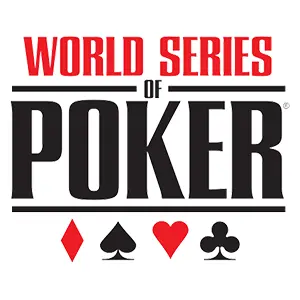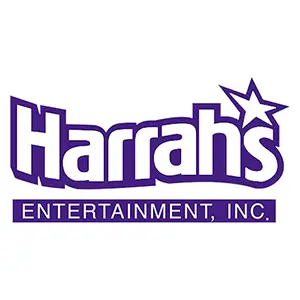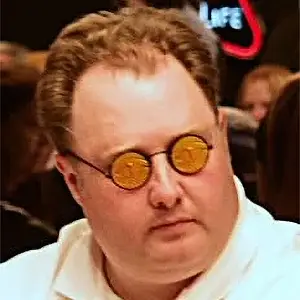Harrah’s Takes Over
Harrah’s Entertainment buys the rights to the WSOP

After nearly 35 years of running the World Series of Poker, and following a lengthy family squabble, the Binions sold the Horseshoe and the rights to the WSOP to Harrah’s Entertainment. Harrah’s, the world’s largest gambling company, was ready to elevate the WSOP to new heights. This transition significantly contributed to the tournament’s impending growth.
The boom in poker popularity
This period coincided with a massive growth in poker’s popularity. Poker players, who had been relatively unknown, started becoming celebrities, and celebrities wanted to become poker players. Poker, once seen on TV only once a year, began to air regularly, especially with the success of the World Poker Tour (WPT). The WPT did more for poker’s popularity in its first couple of years than the WSOP did over several decades. Instead of competing, the WPT complemented the WSOP. Combined with the growth of online poker and Harrah’s promotional efforts, the stage was set for an explosion.
The 2004 WSOP

The 2004 WSOP saw 2,576 players in the main event, three times more than the previous year. This allowed organizers to double the first-place prize to $5 million and significantly expand payouts for other finishers. For instance, second place received $3.5 million, and third place got $2.5 million—the same amount Moneymaker won the previous year. Even fifth place received over a million dollars.
Chris Moneymaker, hired as a spokesperson for PokerStars, encouraged more online players to join the action. The number of online qualifying tournaments and players winning seats at the WSOP grew tremendously. This growth was primarily driven by the online market, though land-based players also became more involved.
Dan Harrington’s impressive run
Despite the larger field, Dan Harrington made it to the final table again, finishing fourth. Harrington, who made his first final table in 1987, won the event in 1995, and finished third in 2003, achieved his biggest cash with $1.5 million for fourth place in 2004. He also won a bracelet in a preliminary tournament, earning around a quarter of a million. The preliminary tournaments expanded to 32 events that year, with prize money increasing significantly.
The final table showdown

With so many entrants, the final tables were mostly filled with unknown players. This year, only Harrington was well known at the final table. The final three were Josh Arieh, a little-known pro; David Williams, who won his entry online at PokerStars; and Greg Raymer, an online player known as “Fossilman.”
Arieh, known for his verbal bullying, got in trouble for his antics at the 2004 WSOP but later apologized. Harrington was the first of the top four finalists to bow out, followed by Arieh, leaving Raymer and Williams to battle for the championship.
The decisive hand
In the final hand, Raymer was dealt pocket eights, while Williams held Ace of Hearts4 of Spades. The flop came 4 of Diamonds2 of Diamonds5 of Spades, giving Williams middle pair and a gutshot straight draw. Raymer check-raised, and Williams called. The turn was 2 of Hearts, and both players bet again. The river was a 2 of Clubs, giving both players a full house. Raymer’s full house was hidden by his pocket eights, an overpair to the board. The money got all in, and Raymer walked away with the championship and the $5 million top prize. Williams, the highest-finishing African American of all time at the tournament, received $3.5 million.
Both players became poker professionals, continuing the trend started by Moneymaker the previous year. With such significant prizes, these players had a nice starting stake for their professional poker careers.
The WSOP, now under Harrah’s Entertainment, was on the path to unprecedented growth, driven by the synergy of television, online poker, and expert management. This era marked a new chapter in the history of poker, setting the stage for the game’s future.
World Series of Poker history
- The Beginnings
- Things Start Taking Off
- The Roaring Eighties
- The Early Nineties
- Silver Bars To The Comeback Kid
- Jack Binion Gets Forced Out
- The New Millenium
- The WSOP Gets Its World Rocked
- Harrah’s Takes Over
- The WSOP Moves To The Rio
- The WSOP Grows One More Time
- The Empire Strikes Back
- The November Nine Begins
- Once In A Blue Moon
- The 2010 Championship
- The 2011 WSOP Final Table Preview
- The 2011 WSOP Championship
- The 2012 World Series Of Poker
- The 2012 WSOP October Nine